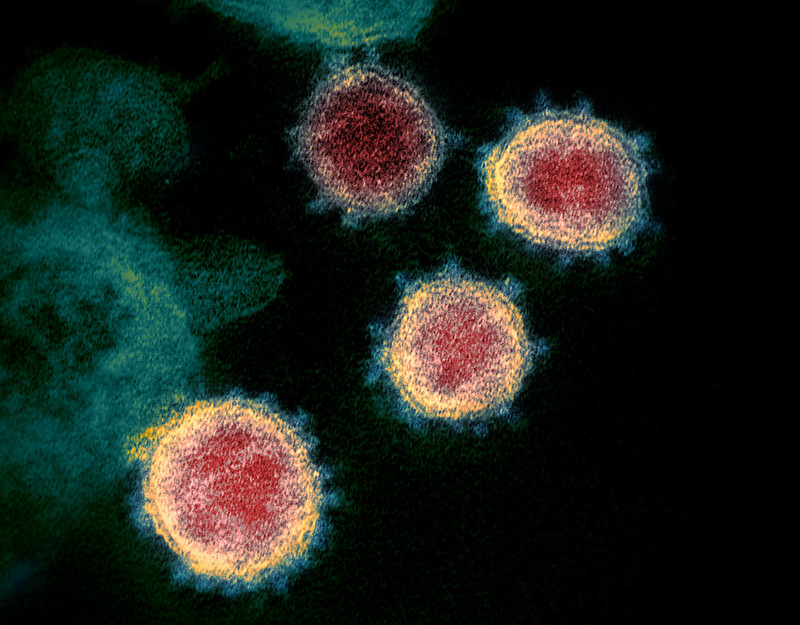Gel could improve effectiveness of face masks and air filters

Credit: National Institute of Allergy and Infectious Diseases
A gel made from the seeds of a South American palm tree entraps SARS-CoV-2 and the protein the virus uses to enter cells, preventing the virus from infecting cells in laboratory cultures, a National Institutes of Health study has found. The findings raise the possibility of future studies to determine if the gel could be incorporated into masks and filters to reduce airborne spread of SARS-CoV-2. The study was conducted by visiting scientist Enrique Javier Carvajal-Barriga, Ph.D., together with Wendy Fitzgerald, in the laboratories of Drs. Doug Fields and Leonid Margolis at NIH’s Eunice Kennedy Shriver National Institute of Child Health and Human Development and colleagues at the National Institute of Biomedical Imaging and Bioengineering.
Background
Previous studies have shown that masking and air filtration can limit the spread of SARS-CoV-2. Designing masks and filters that have antimicrobial properties could further reduce the spread of the virus, the study authors wrote.
With that end in mind, the researchers developed a gel made from nanoparticles of cellulose extracted from the seeds of tagua trees, a family of tropical palms from South America. Cellulose, a component of plant, algal, and bacterial cell walls, mixes readily with water without dissolving, forming a gel with adhesive properties. Compared to cellulose particles from other species, cellulose particles from the tagua seeds are thinner and more uniform, providing a large surface area to bind with viruses.
Results
To begin the infection process, the spike protein on the surface of SARS-CoV-2 must bind to ACE2, a receptor on the surface of the cell. In one experiment, spike protein incubated with the cellulose gel failed to bind with ACE2.
Microscopic examination revealed that cellulose nanoparticles clumped around the spike protein, encapsulating it. Repeated washings failed to dislodge the nanoparticles, suggesting that they may have permanently bound to the spike protein.
In another experiment, the researchers tested whether the cellulose gel could protect lab cultures of human cells from infection with SARS-CoV-2 pseudoviruses—viruses deprived, for safety purposes, of the genetic material needed to cause COVID-19.
Pseudoviruses entrapped in the gel failed to infect the cells. Similarly, the pseudoviruses could not infect cells embedded in the cellulose gel.
In another experiment, the researchers found that HIV-1 incubated with the gel failed to infect human cells in culture, demonstrating that the gel may have potential to prevent infection with other viruses, in addition to preventing infection with SARS-CoV-2.
Significance
The authors concluded that the ability of the nanocellulose gel to prevent viral infections by encapsulating viruses demonstrates that this material has the potential for use as a film for masks and filters, increasing the effectiveness of these devices.
Reference
Carvajal‑Barriga, EJ, et al. Sulfated endospermic nanocellulose crystals prevent the transmission of SARS‑CoV‑2 and HIV‑1. Scientific Reports. 2023.

 BACK TO TOP
BACK TO TOP